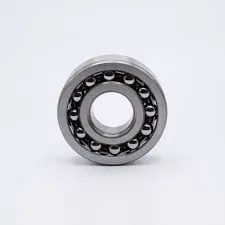
Dec . 15, 2024 10:21 Back to list
machine tool bearings
Understanding Machine Tool Bearings A Key Component for Precision Engineering
In the realm of precision engineering, machine tool bearings play a pivotal role. These specialized bearings are designed to support rotating components, ensuring that they operate smoothly and efficiently under various load conditions. Understanding the intricacies of machine tool bearings can significantly enhance the performance and longevity of machine tools, ultimately leading to better product quality and increased productivity in manufacturing processes.
The Importance of Machine Tool Bearings
Machine tool bearings are crucial for the accurate operation of lathes, milling machines, grinding machines, and other manufacturing equipment. They facilitate the rotation of spindles, shafts, and other moving parts, thus reducing friction and wear, which can lead to mechanical failure if not properly managed. The precise alignment and reduced friction offered by high-quality bearings translate to improved dimensional accuracy of machined parts, making them indispensable in industries that demand tight tolerances and high-quality finishes.
Types of Machine Tool Bearings
Several types of bearings are commonly used in machine tools, each serving specific purposes based on the required load conditions and speeds
1. Ball Bearings These are one of the most common types of bearings used in machine tools. They consist of balls positioned between two raceways, allowing for smooth rotation under both radial and axial loads. Ball bearings are favored for their versatility and ability to operate at high speeds.
2. Roller Bearings Unlike ball bearings, roller bearings use cylindrical rollers. They are designed to handle heavier radial loads and are preferable in applications where loads are significant and speed is less of a concern.
3. Angular Contact Bearings These bearings are specially designed to handle axial loads in one direction, making them ideal for applications with combined loading. They are often found in spindle applications where the ability to bear axial loads is paramount.
machine tool bearings

4. Thrust Bearings Thrust bearings are specifically designed to facilitate axial loads. They are commonly used in applications where there is a vertical load or where components need to resist movement in axial directions, such as in the spindle assemblies of vertical machining centers.
Factors Influencing Bearing Selection
Choosing the right bearing for a specific machine tool application is critical for optimizing performance. Several factors must be considered, including
- Load Characteristics Understanding the type and magnitude of loads that the bearing will experience is vital. Whether the loads are primarily radial, axial, or a combination of both will influence the bearing design.
- Speed Requirements Some applications require high-speed rotation, while others may operate at lower speeds but with higher loads. Selecting bearings that can handle the required speed without excessive heat generation is crucial.
- Environmental Conditions The working environment can impact bearing performance. For instance, exposure to dust, moisture, or extreme temperatures may necessitate the use of sealed or specialized bearings.
- Lubrication Needs Proper lubrication is essential for the longevity of any bearing. The choice of lubricant, its method of application, and maintenance practices will all affect the performance and lifespan of the bearing.
Conclusion
In summary, machine tool bearings are fundamental components that significantly influence the efficiency and effectiveness of precision engineering. With various types tailored for specific applications and loads, the correct selection and maintenance of these bearings are crucial for maximizing the performance of machine tools. By focusing on optimizing these components, manufacturers can achieve higher levels of precision, reliability, and productivity in their operations, ultimately leading to better outcomes in the highly competitive manufacturing landscape. As technology advances, continued innovation in bearing design and materials will likely play a significant role in further enhancing the performance of machine tools in the future.
Latest news
-
Premium Deep Groove Ball Bearings | High Speed & Reliability
NewsAug.29,2025
-
Durable Scaffolding Clamps - Secure & Reliable Tube Connectors
NewsAug.28,2025
-
Common Failures in Thrust Ball Bearings and Solutions
NewsAug.22,2025
-
How Tapered Roller Bearings Can Take Shock Loads
NewsAug.22,2025
-
Angular Bearings in High-Precision Spindles
NewsAug.22,2025
-
The Impact of Misalignment on Cylindrical Roller Bearing Performance
NewsAug.22,2025
